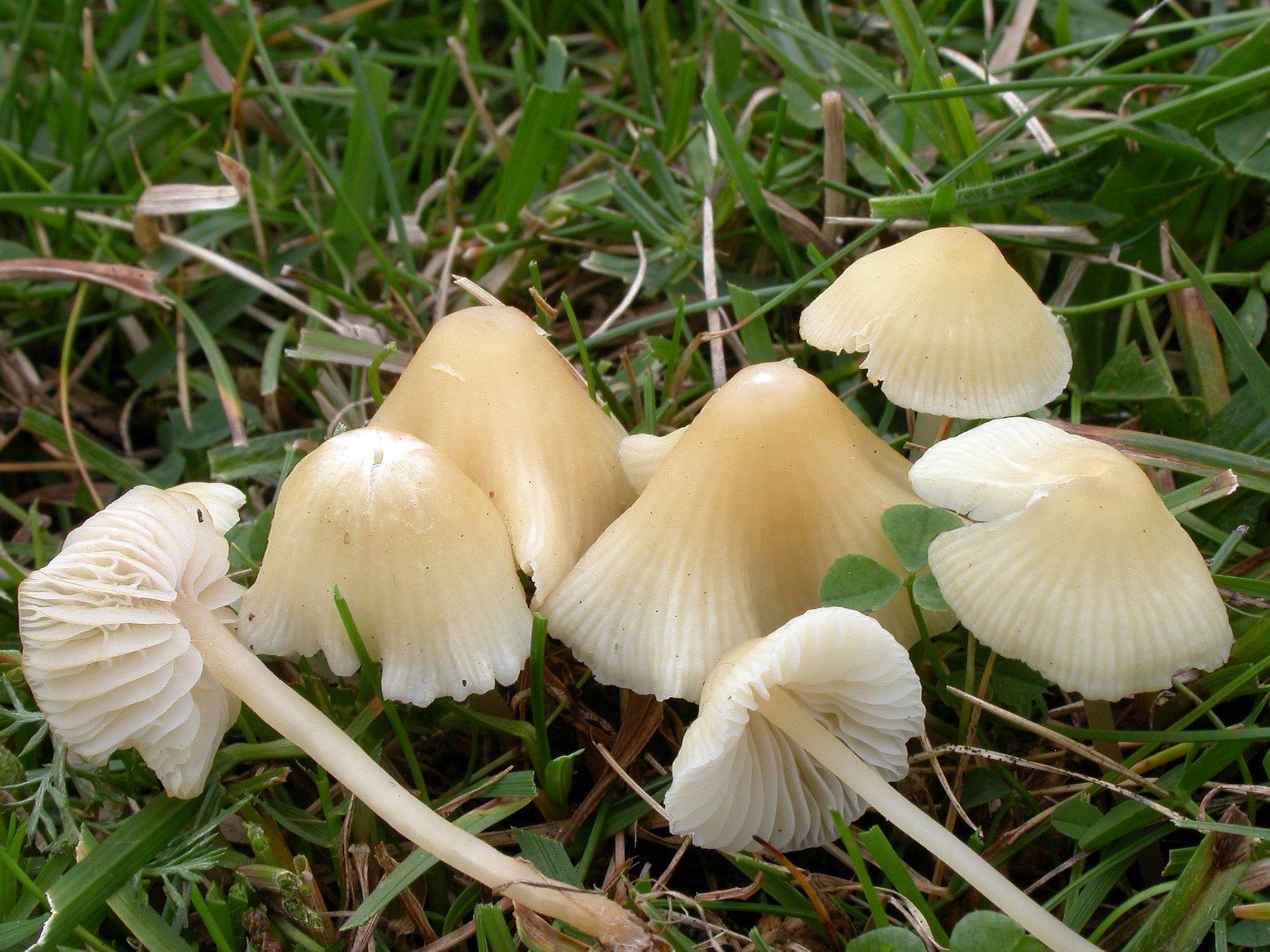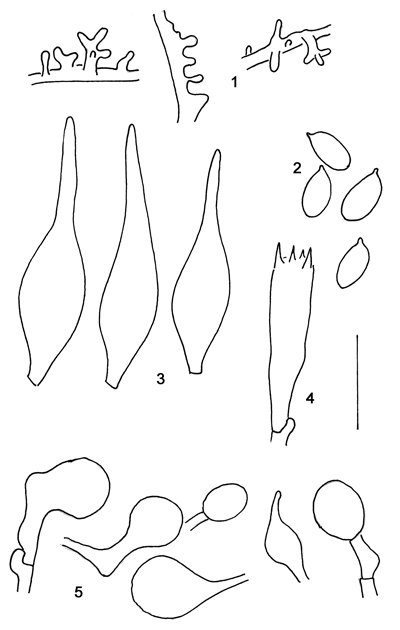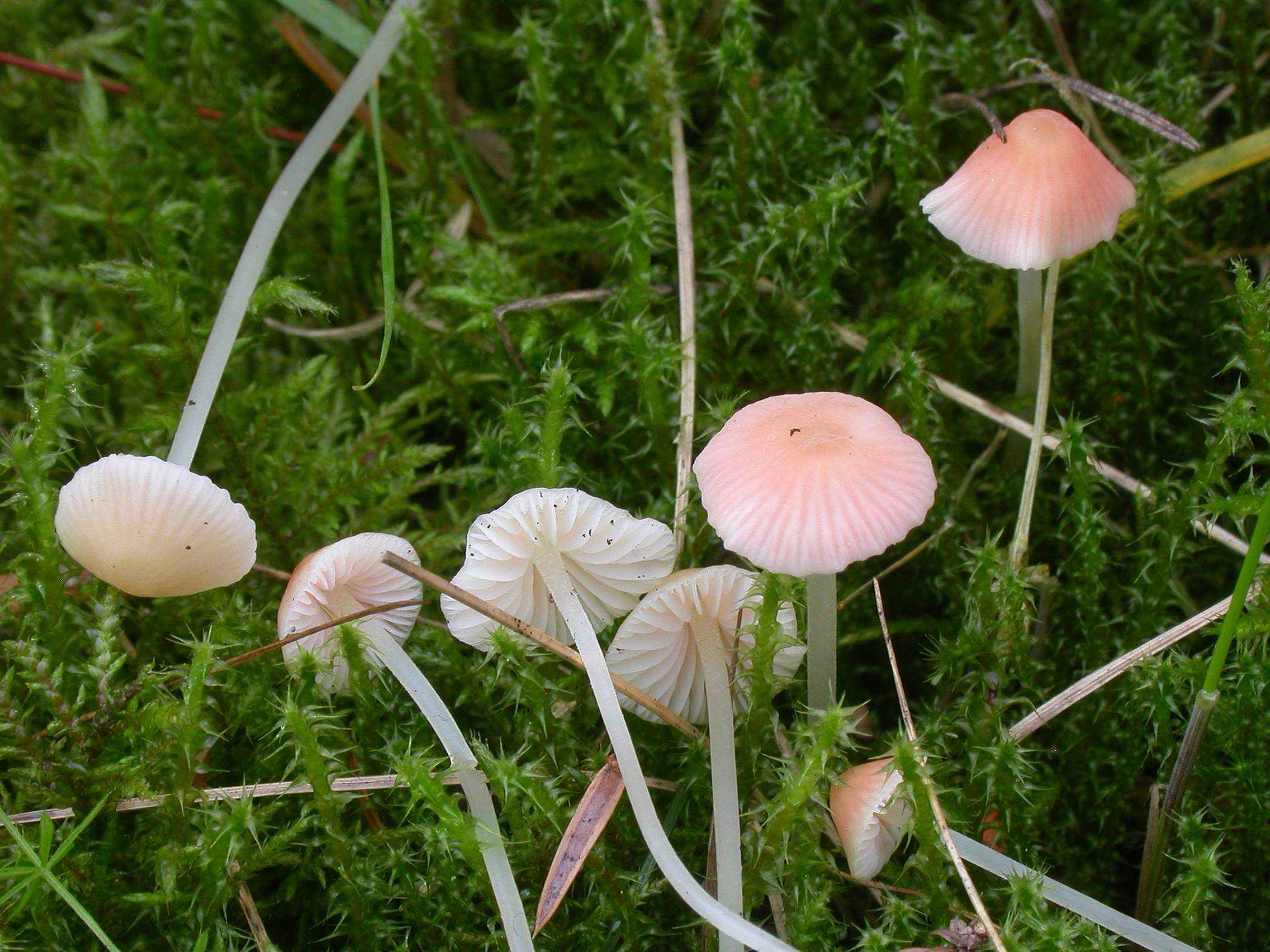Atheniella flavoalba
Atheniella flavoalba
Description
1. Hyphae of the pileipellis, 2. Spores, 3. Cheilocystidia, 4. Basidium, 5. Caulocystidia.
Cap 5-15 mm across, narrowly to broadly conical to parabolical, convex or almost plane, sometimes with a small umbo, sulcate, translucent-striate, ivory-white to yellowish white, sometimes more yellowish at centre. Gills (14-)20-24 reaching the stem, adnexed, with or without a short decurrent tooth, dorsally intervenose with age, white. Stem 20-80 x 1-2 mm, cylindrical equal, pruinose at the apex, glabrous farther down, white, the base densely covered with long, coarse, flexuous white fibrils. Odour indistinctive. Basidia 24-30 x 5.5-6.5 µm, slender-clavate, 4-spored. Spores 6.5-9 x 3-4.5 µm, Q=1.6-2.2, Qav˜1.9, pip-shaped or more cylindrical, non-amyloid. Cheilocystidia 30-60 x 5.5-12.5 µm, occurring mixed with basidia, smooth, fusiform, long- to short-stalked, apically sometimes subcapitate or covered by a gelatinous drop. Pleurocystidia similar. Lamellar trama non-dextrinoid. Hyphae of the pileipellis 2-6.5 µm wide, covered with simple to much branched, cylindrical to strongly inflated excrescences 2-20 x 2-6.5 µm, which tend to form very dense masses and becoming gelatinized. Hyphae of the cortical layer of the stem 2.5-4.5 µm wide, smooth; caulocystidia up to 65 x 20 µm, fusiform, lageniform, subcylindrical or clavate to globose. Clamps present in all tissues.
Ecology and distribution
Scattered to gregarious among grass and moss or on conifer needle beds, on fallen twigs, in deciduous as well as coniferous woods. Summer to autumn. Common all over the country.
Atheniella flavoalba, pink form



